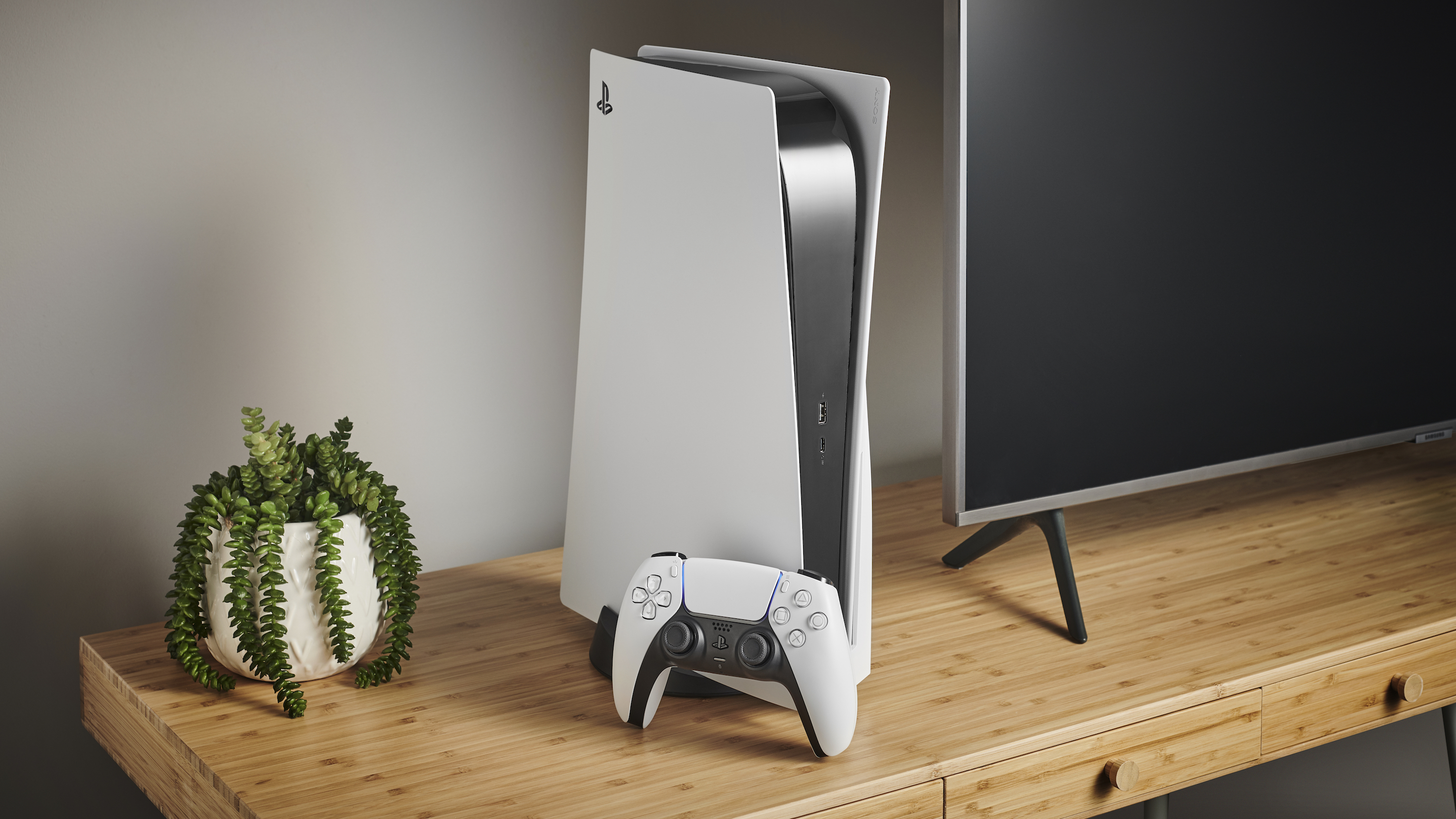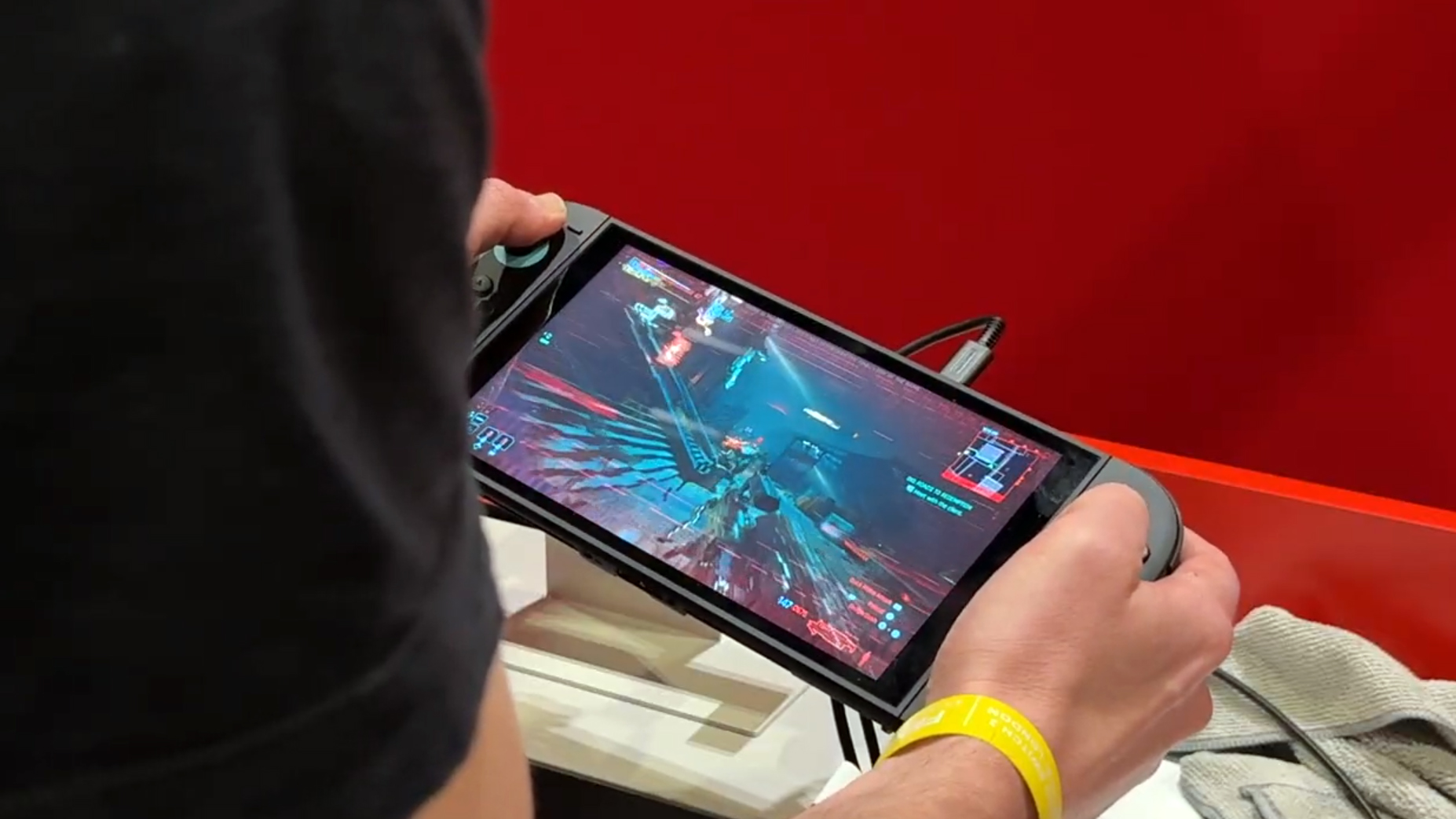
Now this feels next-gen. Recently, Insomniac Games, the Sony studio behind the excellent PS5 exclusive Ratchet & Clank: Rift Apart, released a patch supporting 120Hz displays at 40fps. This bumped the original 30fps frame rate while in full-4K "Fidelity mode" by an additional ten.
After playing the game at both its original 30fps and its new 40fps mode on an LG C9 OLED TV, it proves, without a doubt, to be the new standard for 4K console gaming moving forward.
- Ratchet & Clank: Rift Apart review
- These are the best PS5 games out right now
- Plus: PS5 hardware could power 80 new PC systems
As detailed in the version 1.002 release notes, the added 120Hz Display Mode "reduces input latency when using a compatible display. In this mode, the frame rate target for the Fidelity graphics mode increases to 40 frames per second." What this means is that a game that once looked choppy, with its multiple particle and Ray Traced effects, became 30% smoother.
While still not as smooth as the lower resolution "Performance RT" mode at 60fps, it was enough of an uptick in frames that it produced a happy medium between the standard 30fps Fidelity and Performance modes.
How the 120Hz display mode works
Most console games run at either 30fps or 60fps. It makes sense, as most TVs have a baseline 60Hz refresh rate. A 60Hz television means the display is refreshing 60 times second. So, a game running 30fps on a 60Hz display means a new frame is being introduced every other refresh.
If a game is running at 60fps on a 60Hz display, a new frame is being introduced at every refresh, making for an even smoother image. And if a 60fps game is running on a 120Hz display, it will look just as smooth.
Now I was able to see the full power of the PS5, with Insomniac's intense attention to reflective surface detail at a smooth clip.
In this case of Ratchet & Clanks 120Hz Display Mode, Insomniac Games were able to bump the game up to 40fps in its 4K Fidelity mode. For most gamers, a 40fps refresh rate might seem odd, but it actually divides neatly into a 120Hz display. As noted by The Verge, each frame comes in across three refreshes.
Sign up to get the BEST of Tom's Guide direct to your inbox.
Get instant access to breaking news, the hottest reviews, great deals and helpful tips.
A user on the forum ResetEra broke down the frame rate changes in milliseconds. A 60fps game will have a frame time of 16.7ms. A 30fps game will have a frame time of 33.3ms. A 40fps game falls right in the middle at 25ms.
YouTube channel NX Gamer does an excellent job of explaining how this all works at a more granular level.
120Hz Display mode is new PS5 gold standard
This gives Ratchet & Clank a good enough frame rate boost that it's actually noticeable during gameplay. When I first loaded up Rift Apart, a played an hour of the game at its original 30fps Fidelity mode. I found the choppiness too jarring given all the effects happening on screen at once.
Ratchet & Clank: Rift Apart has proven that a top-end 120Hz television is necessary for the PS5. It really is that much better.
I then decided it would prove to be a better gameplay experience if I opted for the Performance RT mode instead, which lowered the resolution to 1440p (with a few drops to 1080p) while also lowering certain effects and Ray Tracing. Even with the graphical compromise, the added smoothness eliminated some of that motion sickness.
But after the July 1 patch, it was enough of a frame rate improvement that I've stuck to the 120Hz Display mode since. Now I was able to see the full power of the PS5, with Insomniac's intense attention to reflective surface detail at a smooth clip.
Why you need a 120Hz TV like this

The only downside to this is that it will require gamers to upgrade to a 120Hz display. And ideally one that can produce a rich HDR image. As noted in our best gaming TVs roundup, this includes the top-of-the line sets from every manufacturer.
And for gamers that have been desperately checking PS5 restocks, to drop $500 on a console only to then require a $1,000-plus TV purchase is a big ask.
While I love my LG C9 OLED, it's since been discontinued. Luckily, there are a bevy of sets that have comparable, if not better, feature sets that we'd gladly recommend.
I'm personally an LG OLED fan, and either this year's C1 Class or last year's CX will perform with rigor. Unfortunately, OLED sets are some of the most expensive TVs on the market. Occasionally, retailers like Micro Center will have refurbished LG OLEDs on sale. It's how I was able to afford my set. For example, it's possible to find last year's 55" LG CX OLED for $1,000. While expensive, it's $600 cheaper than the current 55" C1 Class at Best Buy.
For those that prefer the increased brightness found in QLED televisions, our TVs editor Brian Westover has praised both the Samsung QN90A Neo and the TCL 6-Series Roku TV. The latter is the more affordable option at $1,099. Not only will these sets support 4K 120Hz output, all have vivid and rich panels that can produce a stunning HDR image.
For those looking for a TV under the $1,000 mark, both the Hisense ULED U8G and Vizio M-Series are solid recommendations. Even then, these TVs hover between $700-900. Unfortunately, dropping below this price point, at the moment, will mean losing out on deeper HDR performance that modern games take advantage of.
Bottom line
Of course, this 120Hz Display mode ideal might become moot once Sony releases a variable refresh rate patch for the PS5, which would automatically sync fps and refresh rates with compatible televisions, eliminating jittering and screen tearing
Moving forward, likely every AAA PS5 game will likely have some kind of 40fps/120Hz mode. And for those wanting the absolute best visual experience out of their PS5s, Ratchet & Clank: Rift Apart has proven that a top-end 120Hz television will be necessary. It really is that much better.
Imad is currently Senior Google and Internet Culture reporter for CNET, but until recently was News Editor at Tom's Guide. Hailing from Texas, Imad started his journalism career in 2013 and has amassed bylines with the New York Times, the Washington Post, ESPN, Wired and Men's Health Magazine, among others. Outside of work, you can find him sitting blankly in front of a Word document trying desperately to write the first pages of a new book.

